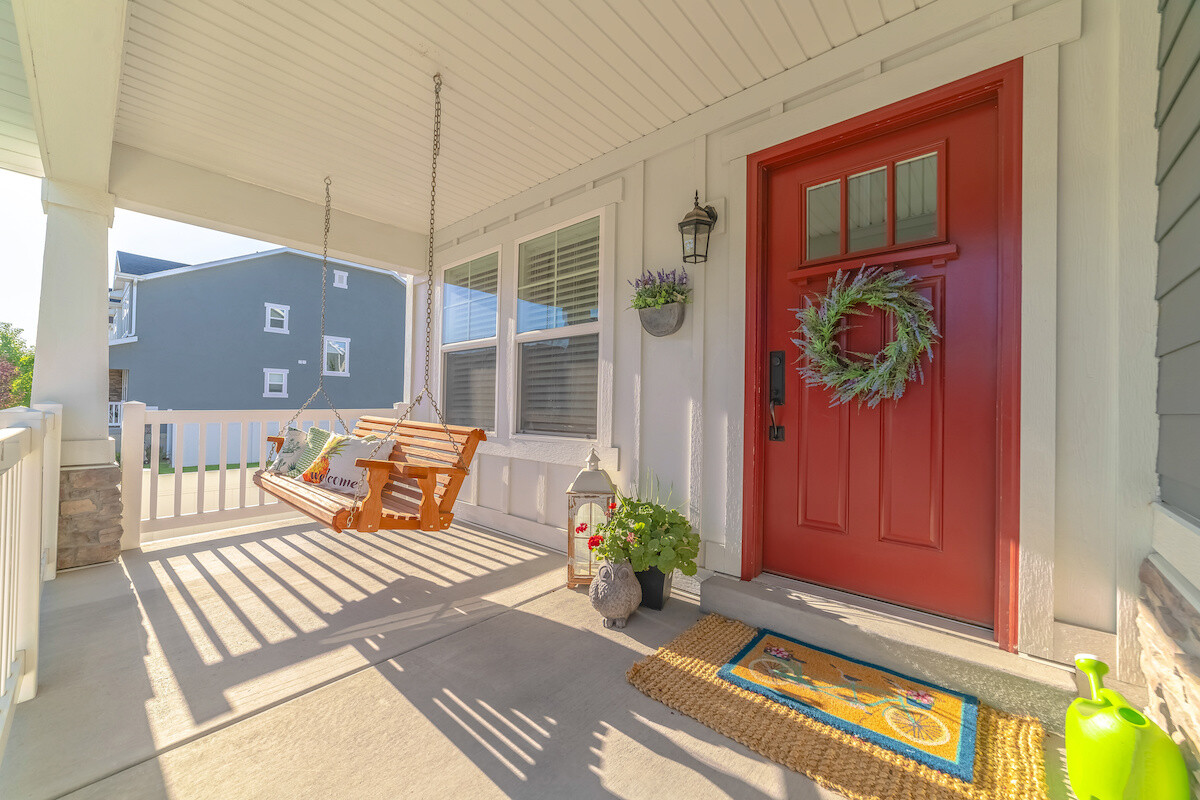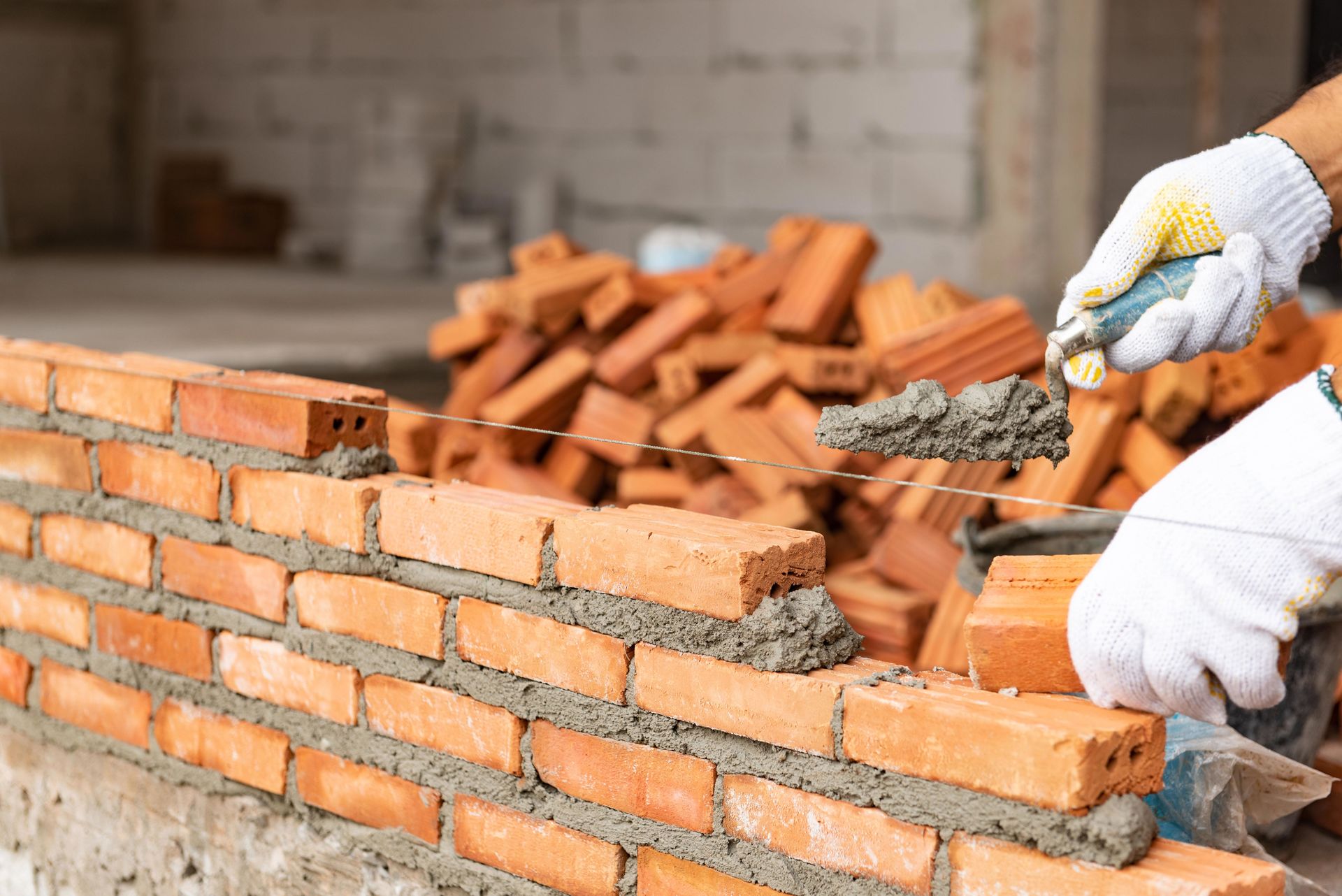Home>diy>Home Improvement>What Does “Renovation” Mean


Home Improvement
What Does “Renovation” Mean
Modified: January 9, 2024
Discover the meaning of "renovation" in the context of home improvement. Explore the various aspects and benefits of renovating your home.
(Many of the links in this article redirect to a specific reviewed product. Your purchase of these products through affiliate links helps to generate commission for Storables.com, at no extra cost. Learn more)
Introduction
Welcome to the world of home renovation! Whether you are a seasoned homeowner or a first-time buyer, the concept of renovating a house can be both exciting and overwhelming. The possibilities are endless, from updating your kitchen to revamping your backyard oasis. But what exactly does “renovation” mean, and why should you consider it?
Renovation refers to the process of restoring or improving a residential property. It involves making changes or upgrades to enhance the functionality, aesthetics, and value of your home. Renovations can range from minor cosmetic updates to major structural changes, depending on your goals and budget.
So why should you embark on a renovation journey? There are several reasons why homeowners choose to renovate their properties. One of the main motives is to create a space that aligns with their needs and lifestyle. Whether you need additional space for a growing family, desire a more open floor plan for entertaining, or simply want to update outdated features, renovations can help transform your house into your dream home.
Another reason to consider renovation is to increase the value of your property. By making strategic improvements, you can potentially boost your home’s market value. This is especially beneficial if you plan to sell your home in the future, as renovations can make it more appealing to potential buyers and enable you to command a higher asking price.
Renovations also offer an opportunity to improve energy efficiency and reduce utility costs. Upgrading insulation, installing energy-efficient appliances, and incorporating sustainable materials can not only help save money on utility bills but also contribute to a greener and more environmentally friendly home.
Furthermore, renovating can breathe new life into your living space. It allows you to personalize your home and make it a reflection of your own unique style and taste. Whether you prefer a modern, minimalist aesthetic or a cozy, rustic ambiance, renovation provides a blank canvas for you to unleash your creativity and create a space that truly feels like home.
Now that you have a better understanding of what renovation entails and why it might be beneficial, let’s explore the different types of renovations you can consider for your home. From kitchen renovations to bathroom makeovers and everything in between, the possibilities are endless. Get ready to embark on a transformative journey that will elevate the beauty, functionality, and value of your home!
Key Takeaways:
- Renovations offer the opportunity to create a personalized, functional, and visually appealing home that aligns with your lifestyle and reflects your unique style, enhancing your overall well-being and quality of life.
- Incorporating environmental considerations into your renovation project can reduce your carbon footprint, save energy, and create a healthier and more sustainable living space, contributing to a greener future.
Definition of Renovation
Renovation is the process of making improvements or changes to a residential property in order to enhance its functionality, aesthetics, and value. It involves updating, repairing, or replacing various elements of a house, such as its structure, fixtures, appliances, and finishes.
Renovations can take different forms depending on the goals and needs of the homeowner. It can range from small-scale projects like painting the walls or replacing flooring to large-scale renovations that involve significant structural changes, such as expanding the house or adding new rooms.
The purpose of renovation is to update and modernize a property, making it more comfortable, efficient, and visually appealing. This can be achieved by improving the functionality and layout of the space, upgrading outdated features, enhancing energy efficiency, and incorporating the latest design trends.
Renovations can be categorized into two main types: cosmetic renovations and structural renovations.
Cosmetic renovations are focused on improving the visual appearance of the property. This can include painting the walls, replacing flooring, updating lighting fixtures, installing new countertops, or adding decorative elements. Cosmetic renovations are often done to give a fresh and updated look to a space without making major structural changes.
Structural renovations, on the other hand, involve altering the existing structure of the house. This can include adding or removing walls, expanding or remodeling rooms, replacing windows or doors, or even changing the roofline. Structural renovations require careful planning and may require the expertise of architects or structural engineers to ensure that the changes are safe and in compliance with building codes.
Renovations can also be categorized based on the specific areas of the house being renovated. Some common types of renovations include:
- Kitchen renovation: Updating kitchen cabinets, appliances, countertops, and lighting to create a more functional and aesthetically pleasing space.
- Bathroom renovation: Upgrading fixtures, tiles, and plumbing systems in the bathroom to improve its functionality and create a spa-like atmosphere.
- Basement renovation: Converting an unfinished basement into usable living space, such as a home theater, gym, or additional bedrooms.
- Exterior renovation: Enhancing the curb appeal of the house by making improvements to the exterior, such as landscaping, repainting, or adding new siding.
It is important to note that renovation is different from remodeling. While renovation focuses on improving and updating an existing property, remodeling involves changing the structure and layout of a space. Remodeling often requires more extensive construction and may involve altering the floor plan, adding new rooms, or even demolishing and rebuilding certain parts of the house.
Now that you have a clear understanding of what renovation entails, let’s explore the reasons why homeowners choose to renovate their properties.
Reasons for Renovating
Renovating a home is a significant undertaking, requiring time, effort, and financial investment. So what are the reasons that drive homeowners to embark on this journey of improvement? Let’s explore some of the common motivations behind renovating a property.
1. Upgrading Functionality: One of the primary reasons for renovating is to improve the functionality of a space. As our lifestyles and needs change, our homes need to adapt as well. Renovations can help optimize the layout, increase storage, and create more efficient and usable spaces. Whether it’s expanding the kitchen, adding an extra bathroom, or creating a home office, functional upgrades enhance our everyday lives and make our homes more practical and enjoyable to live in.
2. Enhancing Aesthetics: Another key motivation to renovate is to enhance the visual appeal of a property. Over time, styles and design trends evolve, and what was once considered fashionable may now appear outdated. Renovating allows homeowners to update the finishes, colors, and overall aesthetics of their home, creating a fresh and modern look. Whether it’s a simple coat of paint, replacing old flooring, or installing new fixtures, aesthetic upgrades can transform a space and make it more visually pleasing.
3. Increasing Property Value: Renovations can also be driven by the desire to increase the value of a property. Making strategic improvements can significantly impact the marketability and selling potential of a home. Upgrading key areas such as the kitchen and bathroom, improving curb appeal, or adding desirable features like a deck or energy-efficient upgrades can attract potential buyers and justify a higher sale price. Even if selling is not in the immediate plans, renovating can be seen as an investment that pays off in the long run.
4. Adapting to Changing Needs: As life circumstances change, so do our housing requirements. Renovating provides an opportunity to adapt our homes to meet these changing needs. Whether it’s accommodating a growing family, creating a home office space for remote work, or making the home more accessible for aging parents, renovations can offer tailored solutions that cater to our evolving lifestyles.
5. Improving Energy Efficiency: With the increasing focus on sustainability and energy conservation, many homeowners undertake renovations to improve the energy efficiency of their homes. Upgrading insulation, replacing windows, installing energy-efficient appliances, and incorporating renewable energy sources can reduce utility bills and minimize a home’s carbon footprint. Not only does this benefit the environment, but it also contributes to long-term cost savings.
6. Repairing and Maintaining: Over time, homes may experience wear and tear or face structural issues that require attention. Renovations provide an opportunity to address these issues and prevent them from escalating into bigger problems. Whether it’s fixing a leaky roof, repairing plumbing or electrical systems, or replacing deteriorating materials, timely renovations can ensure the longevity and safety of a home.
By understanding the reasons behind renovating, homeowners can prioritize their goals and make informed decisions about the scope and scale of their renovation projects. Next, let’s explore the different types of renovations that can be undertaken to transform and improve a property.
Types of Renovations
Renovation possibilities are vast and varied, offering homeowners the opportunity to transform their properties to suit their unique needs and preferences. Let’s delve into some of the common types of renovations that can breathe new life into a home.
1. Kitchen Renovation: The kitchen is often referred to as the heart of the home, and renovating this space can have a dramatic impact on both functionality and aesthetics. Kitchen renovations can involve updating cabinets, countertops, appliances, and lighting fixtures. Additionally, reconfiguring the layout and adding storage solutions can optimize the space and enhance daily cooking and dining experiences.
2. Bathroom Renovation: Bathrooms are essential spaces that should offer both functionality and relaxation. Renovating a bathroom can include replacing fixtures, upgrading the bathtub or shower, installing new tiles, and updating the vanity and lighting. Creating a spa-like ambiance with soothing color schemes and modern features can elevate the bathroom experience.
3. Basement Renovation: Basements often provide underutilized square footage that can be transformed into valuable living space. Renovating a basement can involve converting it into a family room, home theater, office, or even an additional bedroom. Insulation, lighting, flooring, and moisture control measures are essential considerations for creating comfortable and functional basement living areas.
4. Bedroom Renovation: The bedroom is a personal sanctuary, and renovating it can create a tranquil and inviting space. Upgrades may include repainting the walls, replacing flooring or carpets, updating lighting fixtures, and upgrading storage solutions. Creating a cozy and organized bedroom retreat can improve sleep quality and enhance overall well-being.
5. Exterior Renovation: The appearance of a home’s exterior plays a crucial role in curb appeal. Renovating the exterior can involve repainting the facade, replacing siding, updating windows and doors, and enhancing landscaping. An inviting and well-maintained exterior can make a lasting impression and increase the overall value of the property.
6. Whole-House Renovation: A whole-house renovation entails making extensive changes to the entire property. This type of renovation often involves restructuring the floor plan, updating electrical and plumbing systems, replacing flooring, and modernizing the overall aesthetics. Whole-house renovations are ideal for homeowners looking to create their dream home or update an older property to meet contemporary standards.
It’s important to note that the scope and scale of the renovation will depend on factors such as budget, specific needs, and the current condition of the property. Whether it’s focusing on a specific room or revamping the entire house, renovations provide an opportunity to reflect your style, improve functionality, and enhance the overall value of your home.
Now that we have explored the various types of renovations available, let’s move on to understanding the renovation process itself and the key benefits it offers homeowners.
Renovation Process
The renovation process can be exciting but also overwhelming without proper planning and organization. Understanding the typical steps involved can help homeowners navigate the process effectively. While every renovation project is unique, the following outline provides a general overview of the renovation process:
1. Planning and Design: The first step in any renovation project is careful planning and design. This involves identifying the goals and objectives of the renovation, assessing the existing space, and determining the scope of work. It’s important to consider your budget, timeline, and any necessary permits or regulations during this phase. Hiring a professional designer or architect can help in creating detailed plans that align with your vision and requirements.
2. Budgeting and Financing: Once the design is in place, it’s essential to establish a realistic budget for the renovation. This includes considering both the material and labor costs, as well as any unexpected expenses that may arise during the process. Exploring financing options, such as personal loans or home equity lines of credit, may be necessary to fund the project.
3. Hiring Contractors: Depending on the complexity of the renovation, you may need to hire contractors or subcontractors to carry out the work. Researching and selecting reputable professionals is crucial to ensure quality workmanship and timely completion. Obtaining multiple quotes and checking references can help in making informed hiring decisions.
4. Obtaining Permits: Many renovation projects require obtaining the necessary permits from local authorities. This may include building permits, electrical permits, or plumbing permits, depending on the nature of the work being done. Acquiring permits ensures that the renovations are in compliance with building codes and safety regulations.
5. Demolition and Preparation: Before any new construction can begin, existing elements may need to be removed. This can include demolition of walls, flooring, old fixtures, or appliances. Proper preparation and protection of the surrounding areas are essential during this stage.
6. Construction and Installation: Once the space is cleared, the actual construction and installation process begins. This may involve structural changes, electrical and plumbing work, flooring installation, cabinetry installation, and other necessary tasks. Coordination between different trades and regular communication with contractors are key to a smooth construction phase.
7. Finishing Touches: As the construction nears completion, attention is turned towards the finishing touches. This includes painting, installing light fixtures, adding hardware, and other decorative elements. It’s during this stage that the overall vision and design come together to create the desired aesthetic.
8. Final Inspections and Clean Up: Once the renovations are completed, it’s important to schedule final inspections with the appropriate authorities to ensure compliance with regulations. This may include inspections for electrical, plumbing, or structural work. After securing the necessary approvals, a thorough cleanup is done to prepare the space for use.
Remember, proper planning, realistic expectations, and open communication with contractors are essential to the success of a renovation project. By following these steps, homeowners can navigate the renovation process with confidence and achieve the desired results.
Now that you have a better understanding of the renovation process, let’s explore the benefits that come with renovating your home.
Read more: What Does Faucet Mean
Benefits of Renovation
Renovating a home offers a multitude of benefits that go far beyond just the visual appeal. Whether you plan to stay in the home for years to come or are looking to sell, the advantages of renovation are numerous. Let’s explore some of the key benefits:
1. Increased Property Value: Renovations can significantly increase the value of a property. By updating key areas such as the kitchen, bathrooms, or improving curb appeal, you can make your home more appealing to potential buyers. This can translate into a higher selling price and a better return on your investment.
2. Improved Functionality: Renovations give you the opportunity to improve the functionality of your home. Whether it’s creating a more open floor plan, adding storage solutions, or upgrading appliances, these upgrades can enhance daily living and make your home more efficient and enjoyable to live in.
3. Customization and Personalization: Renovating allows you to customize your home to match your unique style and preferences. From choosing paint colors and finishes to selecting fixtures and materials, you have the freedom to design a space that reflects your personality and suits your lifestyle.
4. Enhanced Energy Efficiency: Energy-efficient renovations, such as upgrading insulation, installing energy-efficient windows, or incorporating sustainable materials, can reduce utility costs and minimize your environmental footprint. These improvements not only save you money in the long run but also contribute to a greener and more sustainable home.
5. Increased Comfort and Livability: Renovations can greatly improve the comfort and livability of your home. By upgrading heating and cooling systems, improving insulation, or enhancing the layout and flow of the space, you can create a more welcoming and comfortable environment for you and your family.
6. Aging in Place: Renovations can help make your home more suitable for aging in place. Incorporating features like grab bars in the bathroom, wider doorways, or a first-floor bedroom can enhance accessibility and allow you to comfortably stay in your home as you age.
7. Enhanced Safety and Security: Renovations provide an opportunity to address any safety issues or concerns in your home. Upgrading electrical systems, installing smoke detectors, or improving the security measures can enhance the safety and security of your property, providing peace of mind for you and your family.
8. Pride of Ownership: Renovating your home can bring a sense of pride and accomplishment. Seeing your vision come to life and enjoying the results of your hard work can instill a sense of satisfaction and contentment. Your home will not only be a place to live but also a reflection of your personal taste and style.
With the numerous benefits that come with renovating a home, it’s no wonder that many homeowners choose to embark on this journey of improvement. From increased property value and enhanced functionality to personalization and improved energy efficiency, renovation provides a wealth of advantages that can enhance your quality of life and elevate the value of your home.
Now that we’ve explored the benefits of renovation, it’s important to be aware of the common challenges that homeowners face during the renovation process. Let’s delve into these challenges and how to navigate through them.
When considering a renovation, make sure to carefully plan and budget for the project. Research the necessary permits and regulations in your area to avoid any legal issues. Always hire reputable contractors and obtain multiple quotes before starting the renovation.
Common Challenges in Renovation
Renovating a home can be a thrilling adventure, but it’s not without its fair share of challenges. Being aware of these common hurdles can help homeowners navigate the renovation process more effectively. Let’s explore some of the challenges you may encounter during your renovation journey:
1. Budgeting and Cost Overruns: Sticking to a budget can be one of the biggest challenges in a renovation project. Unexpected expenses, changes in design plans, or unforeseen issues can lead to cost overruns. It’s important to create a realistic budget, have a contingency fund, and carefully track expenses throughout the process.
2. Timelines and Delays: Renovations often involve coordinating multiple trades and suppliers, which can lead to delays. Weather conditions, permit approvals, or unexpected complications can all contribute to project timelines being extended. It’s crucial to have open communication with contractors, establish a realistic timeline, and be prepared for unexpected delays.
3. Decision Fatigue: With a wide range of design choices and materials available, homeowners can easily become overwhelmed with decision-making. From selecting paint colors to choosing fixtures and finishes, decision fatigue can slow down the renovation process. It’s helpful to do thorough research, create a clear vision, and seek professional advice when needed.
4. Unforeseen Structural Issues: Renovations can sometimes reveal underlying structural issues that were not evident initially. Whether it’s rotting wood, plumbing or electrical problems, or issues with the foundation, these unforeseen challenges can add both time and cost to the project. It’s important to have a thorough inspection done before starting the renovation and to allocate a contingency budget to address any unexpected issues.
5. Communication and Coordination: Effective communication and coordination among contractors, designers, and suppliers are crucial for a successful renovation. The absence of clear communication can lead to misunderstandings, mistakes, and delays. Regular check-ins and maintaining open lines of communication are essential to keep things on track.
6. Living Arrangements During Renovation: Depending on the scope of the renovation, homeowners may need to make temporary living arrangements while their home is under construction. This can be challenging, especially for families with children or pets. Planning in advance and considering alternative accommodations can help alleviate some of the disruptions.
7. Emotional Stress: Renovating a home can be emotionally taxing. Decision-making, dealing with unexpected issues, and living in a construction zone can all contribute to stress. It’s important to practice self-care, stay organized, and maintain a positive mindset throughout the renovation process.
While these challenges may seem daunting, with proper planning, open communication, and realistic expectations, homeowners can navigate through them and successfully complete their renovation projects. Remember to stay flexible, be proactive in resolving issues, and keep your end goals in mind.
Now let’s move on to an important aspect of the renovation process: understanding the costs associated with renovating a home.
Renovation Costs
One of the key considerations when planning a renovation project is understanding the costs involved. Renovation costs can vary greatly depending on factors such as the scope of work, the size of the project, and the quality of materials and finishes chosen. Let’s explore some of the common costs associated with home renovations:
1. Materials and Supplies: The cost of renovation materials and supplies can vary significantly depending on the quality and type of products chosen. Whether it’s flooring, fixtures, cabinetry, or paint, it’s important to budget for these expenses. Researching prices, comparing options, and taking advantage of sales or discounts can help manage material costs.
2. Labor and Contractor Fees: Hiring skilled tradespeople and contractors is essential for many renovation projects. Labor costs can vary based on the complexity of the work, the region, and the experience of the professionals involved. Obtaining multiple quotes, checking references, and ensuring clear communication regarding fees can help ensure you get quality work at a fair price.
3. Permits and Licenses: Depending on the scope of work, you may need to acquire permits and licenses from local authorities. These permits come at a cost and are necessary to ensure that the renovations comply with building codes and regulations. It’s important to factor in these fees when budgeting for your renovation project.
4. Design and Architectural Fees: If you’re working with a professional designer or an architect, their services will incur additional costs. Design and architectural fees may include initial consultations, creating plans, 3D renderings, and overseeing the project. These fees can vary depending on the complexity and duration of the project.
5. Contingency Budget: It’s always a good idea to allocate a contingency budget for unforeseen expenses or changes in plans. This buffer can be used to address unexpected issues, accommodate design changes, or cover any additional costs that arise during the renovation process. Experts recommend setting aside around 10-20% of your total budget as a contingency.
6. Financing Costs: If you’re financing your renovation through a loan or a line of credit, it’s important to factor in the associated financing costs. This includes interest charges, loan application fees, or any other fees associated with borrowing the funds for your renovation project.
7. Post-Renovation Costs: It’s essential to consider the long-term costs associated with the renovations. For example, if you’ve upgraded to energy-efficient appliances or materials, you may see savings in utility bills over time. On the other hand, renovations may also require ongoing maintenance or additional expenses down the line.
It’s important to create a detailed budget and have a clear understanding of your financial capacity before starting a renovation project. Researching prices, obtaining multiple quotes, and consulting with professionals can help you make informed decisions and manage your renovation costs effectively.
Remember that renovating a home can be an investment that adds value and enhances your living space. By carefully planning and budgeting, you can ensure that your renovation project stays on track and delivers the results you desire. Now, let’s explore the importance of hiring a professional renovation contractor.
Hiring a Renovation Contractor
When it comes to home renovations, hiring a professional renovation contractor is often a wise decision. A skilled and reputable contractor can bring expertise, experience, and peace of mind to your renovation project. Let’s explore the importance of hiring a renovation contractor and some key considerations when selecting one:
1. Expertise and Experience: Renovation contractors have the knowledge and expertise required to execute a successful renovation project. They understand the intricacies of construction, are familiar with building codes and regulations, and have access to a network of skilled tradespeople. Their experience in managing similar projects allows them to anticipate potential issues and find efficient solutions.
2. Time and Project Management: Renovation contractors have the resources and skills to manage the various aspects of the project, including coordinating subcontractors, scheduling deliveries, and ensuring work progresses on time. Their project management skills help keep the renovation on schedule and minimize delays.
3. Quality Workmanship: Professional contractors take pride in their work and strive to deliver high-quality craftsmanship. They have access to the right tools, materials, and equipment needed to complete the renovation to a high standard. Hiring a reputable contractor ensures that the work is done right the first time, saving you time and money in the long run.
4. Licensing and Insurance: Reputable renovation contractors are licensed and insured, providing protection and peace of mind for homeowners. Licensing ensures that the contractor meets industry standards and regulations, while insurance protects both the contractor and the homeowner in the event of accidents or damages during the renovation process.
5. Budget Management: A skilled contractor can help you stick to your renovation budget. They can provide accurate cost estimates, help you make cost-effective choices, and minimize cost overruns. Their experience and industry knowledge enable them to source materials and labor at competitive prices, reducing expenses without compromising quality.
6. Design and Planning Assistance: Many contractors offer design and planning assistance as part of their services. They can work alongside you to create a functional and aesthetically pleasing space, offer recommendations on materials and finishes, and help bring your vision to life.
7. Contractual Agreements: Hiring a contractor ensures that your renovation project is governed by a formal contract. This contract outlines the scope of work, timelines, payment schedules, and any warranties or guarantees. Having a contractual agreement protects both parties and provides a legal framework for the project.
When hiring a renovation contractor, it is important to do thorough research and due diligence. Some key considerations when selecting a contractor include:
- Checking references and reading online reviews to gauge their reputation.
- Ensuring they have a valid license and appropriate insurance coverage.
- Examining their portfolio of past projects to assess their style and quality of work.
- Obtaining multiple quotes and comparing them in terms of cost, scope, and timeline.
- Having a clear and open line of communication to ensure a good working relationship.
Remember that communication and trust are essential when working with a contractor. Regular updates and ongoing collaboration will help ensure that your vision is understood and executed effectively.
By hiring a professional renovation contractor, you can benefit from their expertise, experience, and project management skills. They provide valuable guidance, ensure high-quality workmanship, and help turn your renovation dreams into reality.
Now, let’s explore another approach to home renovations: the DIY route.
Read more: What Does Chandelier Mean
DIY Renovations
Embarking on a do-it-yourself (DIY) renovation project can be a rewarding and cost-effective option for homeowners. It allows you to take full control of the renovation process, unleash your creativity, and save money on labor costs. However, DIY renovations come with their own set of considerations and challenges. Let’s explore the benefits and important factors to keep in mind when taking on a DIY renovation project:
1. Cost Savings: One of the primary motivations for DIY renovations is the potential for significant cost savings. By taking on the labor yourself, you can eliminate the expenses associated with hiring a professional contractor. However, it’s important to be realistic about your skill level and the complexity of the project. Sometimes, DIY projects can end up costing more in the long run if mistakes are made along the way.
2. Flexibility and Control: The DIY approach gives you complete control over the design and execution of the renovation. You can tailor the project to your specific needs and preferences, making it a truly personalized endeavor. The flexibility to work at your own pace and make changes on the fly can also be a benefit of DIY renovations.
3. Learning and Skill Development: DIY renovations provide an opportunity to learn new skills and gain valuable knowledge about the construction and renovation process. With the abundance of resources available, including online tutorials, books, and workshops, you can acquire the necessary skills and tackle more complex projects over time. However, it’s important to recognize your limitations and consult with professionals when necessary.
4. Sense of Accomplishment: Completing a DIY renovation can bring a great sense of accomplishment and pride in your abilities. Seeing the transformation of your own hard work can be incredibly satisfying and rewarding.
While DIY renovations offer several advantages, it’s important to consider some key factors before diving into a project:
- Skill Level: Assess your skill level honestly and realistically. Be aware of your limitations and seek professional help for tasks that require specialized knowledge or expertise. This is especially important when dealing with structural changes, electrical work, or plumbing.
- Planning and Research: Thoroughly plan your DIY renovation, including creating a detailed timeline, obtaining necessary permits, and researching the materials and techniques required. This helps to ensure that you have a clear understanding of the project and can handle potential challenges that may arise.
- Safety Considerations: Safety should always be a top priority in any renovation project. Take proper precautions, such as wearing protective gear, using safe tools and equipment, and following all safety guidelines. If unsure about any aspect of the project, consult with professionals or hire a contractor for the more technical or hazardous tasks.
- Quality and Durability: DIY renovations should always aim for high-quality workmanship and durable results. Take the time to research and invest in quality materials and finishes. Cutting corners or using subpar materials can lead to issues down the line and compromise the longevity and value of your renovation.
- Time and Patience: DIY renovations often take longer than expected, especially if you have limited time to devote to the project. Be prepared for delays and setbacks, and remain patient throughout the process. Rushing through a renovation can lead to mistakes and compromise the quality of the work.
Remember that DIY renovations are not suitable for every project or every individual. Assess your capabilities, resources, and available time before deciding to take on a DIY renovation. It’s important to strike the right balance between what can be accomplished yourself and when it’s necessary to enlist the help of professionals.
By considering these factors and approaching your DIY renovation project with careful planning and realistic expectations, you can create a space that reflects your personal style, save money, and achieve a sense of accomplishment.
Now, let’s shift our focus to an important aspect of renovations that carries long-term implications: environmental considerations.
Environmental Considerations in Renovation
As we become more conscious of our environmental impact, considering sustainability and eco-friendly practices in home renovations has become increasingly important. By incorporating environmental considerations into your renovation project, you can reduce your carbon footprint, save energy, and create a healthier and more sustainable living space. Here are some key environmental considerations to keep in mind:
1. Energy Efficiency: Improving the energy efficiency of your home not only helps the environment, but it also saves you money on utility bills. Consider upgrading insulation, replacing windows and doors with energy-efficient options, and installing energy-saving appliances and fixtures. These measures can significantly reduce your energy consumption and decrease greenhouse gas emissions.
2. Water Conservation: Implementing water-saving strategies in your renovation can help preserve this precious resource. Consider installing low-flow toilets, faucets, and showerheads to minimize water usage. Collecting rainwater for irrigation or investing in water-efficient landscaping can also contribute to water conservation efforts.
3. Sustainable Materials: Choosing sustainable materials is an essential part of an environmentally friendly renovation. Opt for renewable, recycled, or reclaimed materials whenever possible. Look for eco-certifications like Forest Stewardship Council (FSC) certification for wood products or Cradle to Cradle (C2C) certification for building materials that have been manufactured with sustainability in mind.
4. Indoor Air Quality: A healthy indoor environment is crucial for the well-being of home occupants. Selecting low-emission materials, such as low VOC (volatile organic compound) paints and finishes, ensures better air quality. Proper ventilation and air circulation systems are also important to maintain a healthy indoor environment.
5. Waste Reduction and Recycling: Minimizing construction waste and promoting recycling are important aspects of eco-friendly renovations. Dispose of construction debris responsibly, and consider salvaging or donating old fixtures, appliances, and materials instead of sending them to landfills. Recycling and repurposing materials help reduce the demand for new resources and minimize waste in the renovation process.
6. Green Energy Solutions: Explore renewable energy options to power your home. Installing solar panels or utilizing geothermal heating and cooling systems can decrease reliance on fossil fuels and reduce carbon emissions. These green energy solutions can provide long-term energy savings and contribute to a more sustainable lifestyle.
7. Longevity and Durability: Ensure that your renovation focuses on longevity and durability. Select materials and finishes that are built to last, reducing the need for frequent replacements. Investing in high-quality products can save resources and reduce waste in the long run.
By incorporating these environmental considerations into your renovation project, you can make a positive impact on the planet while creating a healthier and more sustainable home. Prioritize energy efficiency, water conservation, and sustainable materials to reduce your environmental footprint and contribute to a greener future.
Now that we’ve explored the importance of environmental considerations, let’s conclude our journey through the world of home renovations.
Conclusion
Home renovations offer an exciting opportunity to transform your house into a personalized sanctuary that enhances your lifestyle and reflects your unique style. Whether you choose to hire a professional renovation contractor or embark on a DIY project, renovation brings numerous benefits and considerations.
Understanding the definition of renovation and the reasons for renovating is the first step in embarking on your home improvement journey. Through renovations, you can upgrade functionality, enhance aesthetics, increase property value, and adapt to changing needs. Renovations allow you to create a space that aligns with your lifestyle and preferences, providing comfort, beauty, and efficiency.
The renovation process involves careful planning, realistic budgeting, and effective project management. By following a systematic approach and working with skilled professionals or undertaking DIY projects, you can successfully navigate the renovation process and achieve the desired results.
Renovation costs play a significant role in decision-making, and it’s important to diligently research materials, labor, permits, and other associated expenses. Understanding the budgetary aspects of renovation enables you to plan effectively and make informed choices throughout the project.
While renovations come with their own set of challenges, such as budgeting, delays, and decision fatigue, these obstacles can be overcome with proper planning and flexibility. Patience, clear communication, and a realistic timeline help manage challenges and keep the renovation on track.
The choice between hiring a renovation contractor or embarking on a DIY project depends on your skill level, budget, and complexity of the renovation. Hiring experienced professionals can bring expertise, efficiency, and peace of mind, while DIY projects offer cost savings, flexibility, and a sense of accomplishment. Assessing your skills, resources, and project requirements will guide you in making the best decision.
As we become increasingly aware of environmental issues, incorporating sustainability into renovations has become crucial. By considering energy efficiency, water conservation, sustainable materials, and waste reduction, you can create a more eco-friendly and sustainable living space.
In conclusion, home renovations present an opportunity to rejuvenate your living space, improve functionality, and enhance your overall well-being. With careful planning, creativity, and a dedicated approach, renovations can transform your house into a home that truly reflects your personal style and enhances your quality of life.
So, whether you’re embarking on a kitchen renovation, bathroom makeover, or whole-house transformation, may your renovation journey be filled with excitement, fulfillment, and the realization of your dream home.
Frequently Asked Questions about What Does "Renovation" Mean
Was this page helpful?
At Storables.com, we guarantee accurate and reliable information. Our content, validated by Expert Board Contributors, is crafted following stringent Editorial Policies. We're committed to providing you with well-researched, expert-backed insights for all your informational needs.














0 thoughts on “What Does “Renovation” Mean”